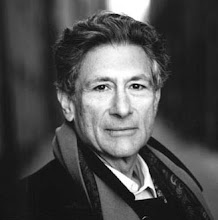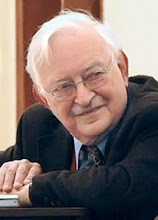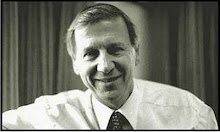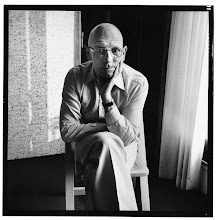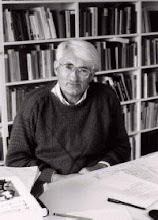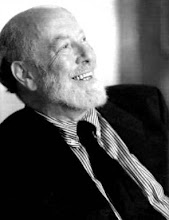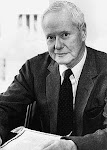CITE:
Kramer, W. (Director). (2009). Crossing Over [Motion picture]. United States: Weinstein Company.
Sunday, February 14, 2010
Tuesday, February 9, 2010
2/9/10 Class Notes
February 9, 2010
I. C. Wright Mills – Power Elite
a. Movement from institution to another – military, economy, political – military industrial complex
b. The social psychology of the elite – political paradigm, school
II. Jergen Habermas – German Social Philosopher – second generation critical theorist. Examples of first generation critical theorist were Adorno who was responsible for the culture industry. Marcuse (German) wrote the book “One Dimensional Man.”
a. Habermas worked on the re-construction of Historical Materialism – Marx theory (Das Capital) Capitalism = new elements—Recent Capitalism= the role of the state (government).
b. Marx Theory—a gap exists between economic and political while Habermas notes that the government (political) corrects and/or recovers economic failure—Example “The Bail-Out” ;o)
III. Jurgen Habermas
a. Max Weber + Sigmund Freud + Talcott Parsons
b. Weberian Marxists
c. Marx vs. Habermas—Marx was dealing with early capitalism (industrial capitalism) and the separation between political and institutions in economic institutions, economic analysis—economic factor alone—proletariat and bourgeoisie. Habermas focused on post-industrial society (new capitalism—information technology)—active intervention on the part of the state—interested in a social economic and cultural analysis.
d. “System” and “Lifeworld” are parts of society. System=political institution plus economic institution. Lifeworld =Communicative action.
e. Habermas = System to Lifeworld. System = Political and Economic = face-to-face interaction is not a requirement = the process of rationalization in formal organizations. Lifeworld = communicative action = face-to-face interaction plays a critical role.
http://www.cynthiagilligan.com/sociology/2~9~10.doc
I. C. Wright Mills – Power Elite
a. Movement from institution to another – military, economy, political – military industrial complex
b. The social psychology of the elite – political paradigm, school
II. Jergen Habermas – German Social Philosopher – second generation critical theorist. Examples of first generation critical theorist were Adorno who was responsible for the culture industry. Marcuse (German) wrote the book “One Dimensional Man.”
a. Habermas worked on the re-construction of Historical Materialism – Marx theory (Das Capital) Capitalism = new elements—Recent Capitalism= the role of the state (government).
b. Marx Theory—a gap exists between economic and political while Habermas notes that the government (political) corrects and/or recovers economic failure—Example “The Bail-Out” ;o)
III. Jurgen Habermas
a. Max Weber + Sigmund Freud + Talcott Parsons
b. Weberian Marxists
c. Marx vs. Habermas—Marx was dealing with early capitalism (industrial capitalism) and the separation between political and institutions in economic institutions, economic analysis—economic factor alone—proletariat and bourgeoisie. Habermas focused on post-industrial society (new capitalism—information technology)—active intervention on the part of the state—interested in a social economic and cultural analysis.
d. “System” and “Lifeworld” are parts of society. System=political institution plus economic institution. Lifeworld =Communicative action.
e. Habermas = System to Lifeworld. System = Political and Economic = face-to-face interaction is not a requirement = the process of rationalization in formal organizations. Lifeworld = communicative action = face-to-face interaction plays a critical role.
http://www.cynthiagilligan.com/sociology/2~9~10.doc
Extra Terms
C. Wright Mills - Military-industrial complex (MIC) is a concept commonly used to refer to policy relationships between governments, national armed forces, and industrial support they obtain from the commercial sector in political approval for research, development, production, use, and support for military training, weapons, equipment, and facilities within the national defense and security policy. It is a type of iron triangle.
Habermas - Historical materialism is a methodological approach to the study of society, economics, and history, first articulated by Karl Marx (1818-1883). Marx himself never used the term but referred to his approach as "the materialist conception of history." Historical materialism looks for the causes of developments and changes in human society in the means by which humans collectively produce the necessities of life. The non-economic features of a society (e.g. social classes, political structures, ideologies) are seen as being an outgrowth of its economic activity. The classic brief statement of the theory was made by Marx in the Preface to A Contribution to the Critique of Political Economy (1859).
Habermas - Historical materialism is a methodological approach to the study of society, economics, and history, first articulated by Karl Marx (1818-1883). Marx himself never used the term but referred to his approach as "the materialist conception of history." Historical materialism looks for the causes of developments and changes in human society in the means by which humans collectively produce the necessities of life. The non-economic features of a society (e.g. social classes, political structures, ideologies) are seen as being an outgrowth of its economic activity. The classic brief statement of the theory was made by Marx in the Preface to A Contribution to the Critique of Political Economy (1859).
Study Guide 2 - Test 2/18/10
PART I: ESSAY QUESTIONS
1. What is sociological imagination, according to C. Wright Mills?
2. Who are the power elite and what are the social reasons for their existence?
3. What does Habermas mean by the reconstruction of historical materialism?
4. Discuss in detail Habermas’s notions of lifeworld and sytem.
5. What is standpoint theory and how do Dorothy Smith and Patricia Hill Collins resemble and differ in terms of their relation to the theory?
PART II: CONCEPTS
I. C. Wright Mills
Conflict Theory; Critique of the Social Order; Sociological imagination; Abstracted Empiricism; Grand Theory; Personal Troubles and Public Issues; Authority and Manipulation; Power Elite; The Power Elite and the Revolving Door; Military-Industrial Complex; Collective Biography; Mass Society; The “Big Three” Institutions; White Collar; Status Panic; Political Fragmentation and Authoritarianism; Sociologists and Politics;
II. Jurgen Habermas
Critical Theory; Subjective Reason; Objective Reason; Individualistic Rationality; technological Rationality; Culture Industry; Surplus Repression; Repressive Desublimation; Communicative Action; Ideal Speech Situation; Lifeworld and System; Steering Media; Colonization of the Lifeworld; Public sphere,; New Social Movements;
III. Dorothy Smith & Patricia Hill Collins
Feminist Theories; Standpoint Theory; Bifurcation of Consciousness; Relations of Ruling; Institutional Ethnography; Standpoint Epistemology; Matrix of domination; Black Feminist Thought
1. What is sociological imagination, according to C. Wright Mills?
2. Who are the power elite and what are the social reasons for their existence?
3. What does Habermas mean by the reconstruction of historical materialism?
4. Discuss in detail Habermas’s notions of lifeworld and sytem.
5. What is standpoint theory and how do Dorothy Smith and Patricia Hill Collins resemble and differ in terms of their relation to the theory?
PART II: CONCEPTS
I. C. Wright Mills
Conflict Theory; Critique of the Social Order; Sociological imagination; Abstracted Empiricism; Grand Theory; Personal Troubles and Public Issues; Authority and Manipulation; Power Elite; The Power Elite and the Revolving Door; Military-Industrial Complex; Collective Biography; Mass Society; The “Big Three” Institutions; White Collar; Status Panic; Political Fragmentation and Authoritarianism; Sociologists and Politics;
II. Jurgen Habermas
Critical Theory; Subjective Reason; Objective Reason; Individualistic Rationality; technological Rationality; Culture Industry; Surplus Repression; Repressive Desublimation; Communicative Action; Ideal Speech Situation; Lifeworld and System; Steering Media; Colonization of the Lifeworld; Public sphere,; New Social Movements;
III. Dorothy Smith & Patricia Hill Collins
Feminist Theories; Standpoint Theory; Bifurcation of Consciousness; Relations of Ruling; Institutional Ethnography; Standpoint Epistemology; Matrix of domination; Black Feminist Thought
Friday, February 5, 2010
C. Wright Mills (READ BEFORE EXAM 2)
The Structure of Power in American Society - http://www.cynthiagilligan.com/sociology/cwrightmills.pdf
Wednesday, February 3, 2010
2/2/10 Class Notes
C. Wright Mills
I. American Sociologist
a. Similar to Karl Marx regarding capitalism and beyond.
b. Knowledge plus social change—Sociological knowledge as a means to an end.
c. Public intellectual—political and social issues (book by Howard Zinn—The People’s History of the United States).
d. Sociological Imagination is a concept coined by C. Wright Mills
Research and theory = research = data + theory = imagination (if not properly done will result in Abstracted Imperialism or Grand Theory.
II. Abstracted Imperialism – Data Collected without theory (opposite of Grand Theory
III. Grand Theory—Fetishism of Concepts—theory in spite of empirical data.
IV. Socio-Historical Approach – History – Present and Past is a long process – comparative analysis
V. Personal and Public Issues—personal troubles and public issues—unemployment is a personal and public issue although C. Wright Mills would have felt it only a public issue. Public issues cause Public Discourse.
VI. The Power Elite—(look on webct) who are the power elite? Economic order—B Gates, political order--President, military order—Military General—Why are they powerful? Because of their institutional power. Institutional power—national and international consequences.
VII. World War II—afterwards the US became one of the wealthiest countries in the world.
http://www.cynthiagilligan.com/sociology/2~2~10.doc
I. American Sociologist
a. Similar to Karl Marx regarding capitalism and beyond.
b. Knowledge plus social change—Sociological knowledge as a means to an end.
c. Public intellectual—political and social issues (book by Howard Zinn—The People’s History of the United States).
d. Sociological Imagination is a concept coined by C. Wright Mills
Research and theory = research = data + theory = imagination (if not properly done will result in Abstracted Imperialism or Grand Theory.
II. Abstracted Imperialism – Data Collected without theory (opposite of Grand Theory
III. Grand Theory—Fetishism of Concepts—theory in spite of empirical data.
IV. Socio-Historical Approach – History – Present and Past is a long process – comparative analysis
V. Personal and Public Issues—personal troubles and public issues—unemployment is a personal and public issue although C. Wright Mills would have felt it only a public issue. Public issues cause Public Discourse.
VI. The Power Elite—(look on webct) who are the power elite? Economic order—B Gates, political order--President, military order—Military General—Why are they powerful? Because of their institutional power. Institutional power—national and international consequences.
VII. World War II—afterwards the US became one of the wealthiest countries in the world.
http://www.cynthiagilligan.com/sociology/2~2~10.doc
Subscribe to:
Posts (Atom)
